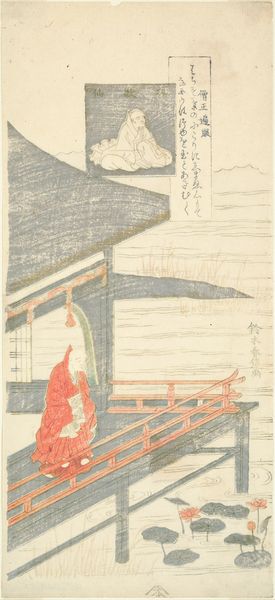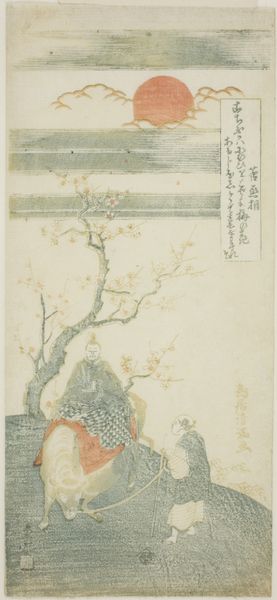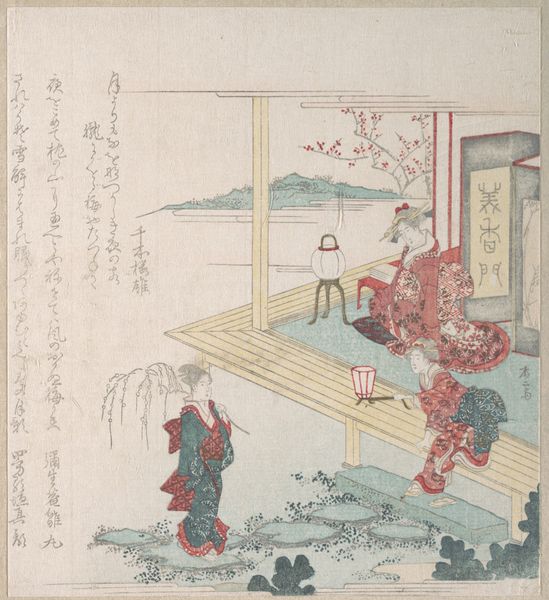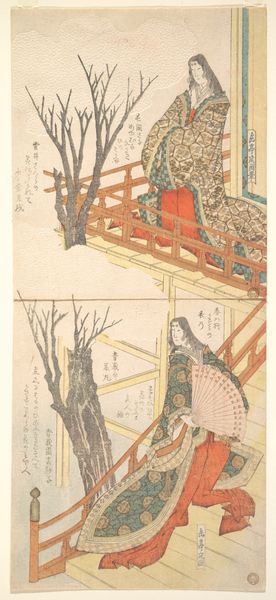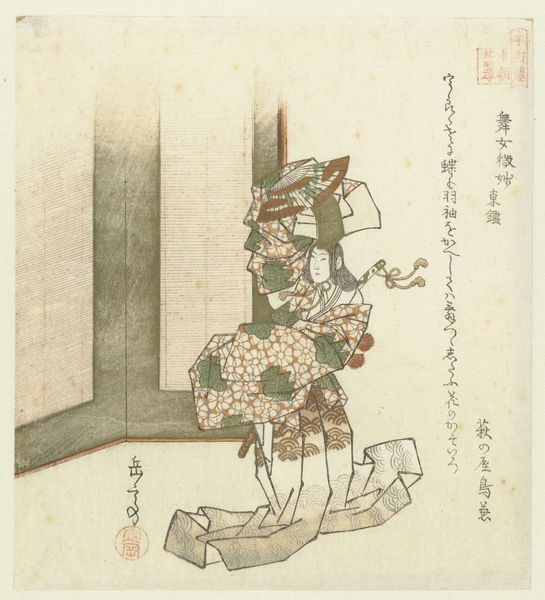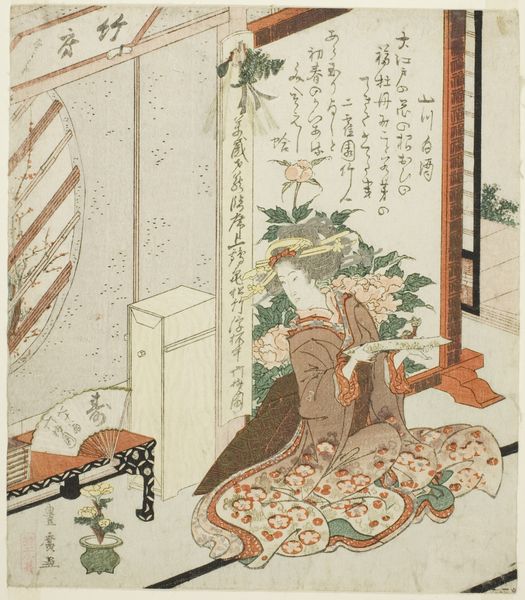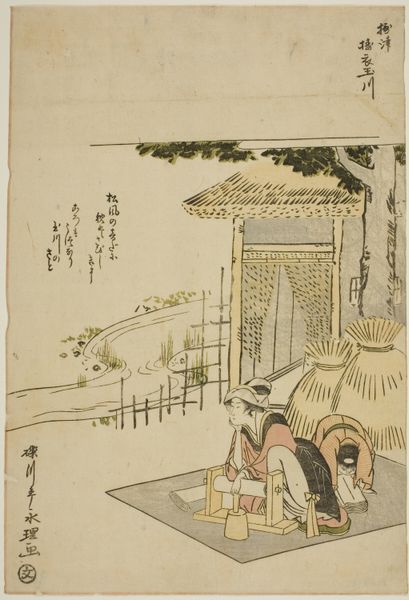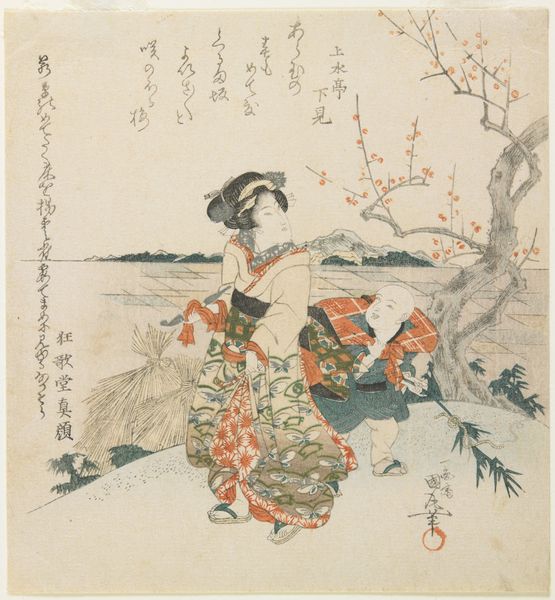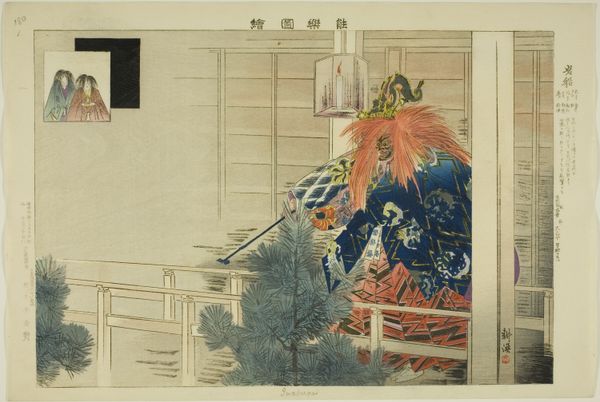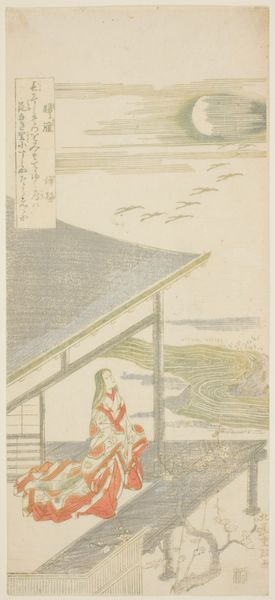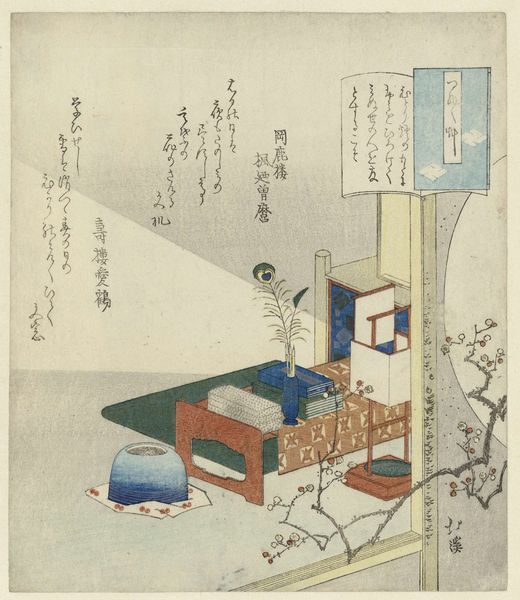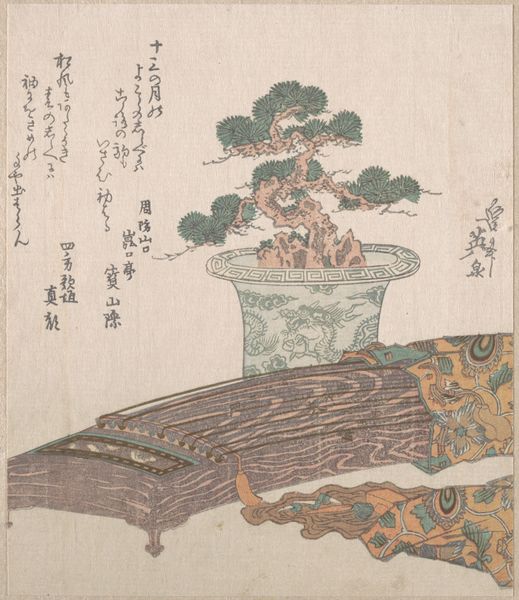
Poem by Ariwara no Narihira, from the series "Six Famous Poets (Rokkasen)" c. 1764 - 1765
0:00
0:00
print, etching, woodblock-print
#
portrait
# print
#
etching
#
asian-art
#
landscape
#
etching
#
ukiyo-e
#
japan
#
woodblock-print
#
genre-painting
Dimensions: 30.7 × 13.9 cm (12 1/8 × 5 1/2 in.)
Copyright: Public Domain
Curator: Before us is "Poem by Ariwara no Narihira, from the series 'Six Famous Poets (Rokkasen)'", a print by Suzuki Harunobu, dating from around 1764 or 1765. It’s currently held at The Art Institute of Chicago. Editor: It feels wistful. The colors are so muted, almost like a memory fading. And the vertical format gives it this compressed, intimate quality. Curator: Harunobu, working within the Ukiyo-e tradition, often explored themes of love, beauty, and fleeting moments, all very resonant in the context of the era's social dynamics. The print offers a lens into the representation of classical Japanese poetry through visual art, subtly embedding commentaries on identity. Editor: Semiotically speaking, we have the distinct spatial divisions here. An interior scene gives way to an exterior world and this liminal threshold created by the veranda with its framed lattice is an example of how structure and line articulate experience. Curator: Yes, and that layering is not just visual. It invites us to consider the limited roles afforded to women in expressing agency in society and this domestic scene reflects societal restrictions. The composition and style create meaning here by engaging traditional art-historical frameworks. Editor: Agreed. Though within those limits, there's also this mastery of texture, the details in her kimono, or the way he’s rendered the veranda itself. The very flat and geometric roof provides strong horizontal force at play with a feminine softness found in the blossoming florals. It’s a sophisticated study of complementary shapes and motifs. Curator: Viewing this print through a contemporary lens allows us to grapple with the historical and enduring politics embedded in Japanese artistic traditions. It speaks to our experiences, prompting a reconsideration of representation and visibility today. Editor: For me, analyzing its structural qualities heightens its aesthetic power and illustrates just how art operates in our understanding of space. Curator: And so, this single sheet manages to create an expansive dialogue about history, gender, and the politics of seeing and being seen. Editor: A convergence of visual design.
Comments
No comments
Be the first to comment and join the conversation on the ultimate creative platform.
